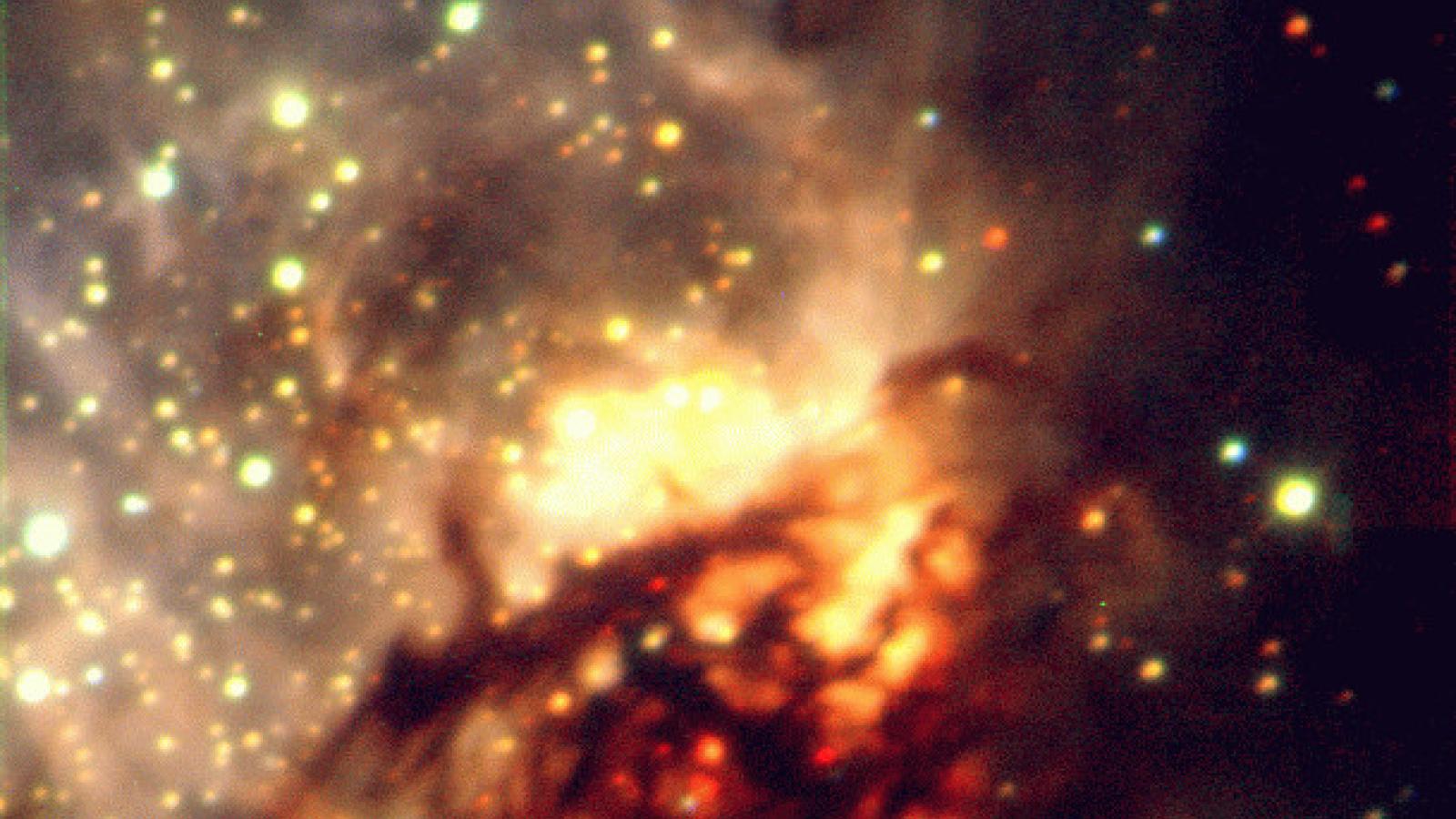Ohio State InfraRed Imager/Spectrometer (OSIRIS)
OSIRIS was a general-purpose 1-2.5 micron imager and moderate-resolution spectrometer that was the first cryogenic infrared instrument built by the OSU ISL. Originally designed to fully illuminate a 256x256 NICMOS-3 HgCdTe array with 27 micron pixels (then the largest IR array available) it was eventually retrofit to use a 1024x1024 Hawaii H1RG HgCdTe array with 18.5 micron pixels. OSIRIS had a long and scientifically productive career first on the Perkins 1.8m telescope at Lowell (1991-1998), it spent 1994 on the CTIO 1.5m telescope originally to observe the collision of Comet Shoemaker-Levy 9 with Jupiter, but stayed to execute the southern part of the OSU IR Bright Galaxy Survey. It returned to Lowell in 1995 where it was heavily used until 1998 when it was retrofit with a 1024x1024 H1RG array and moved to CTIO in 1999 where it became the facility IR imager/spectrometer on the 4-m Blanco telescope until 2004, after which it became a facility instrument at the 4.2m SOAR telescope on Cerro Pachon. It was retired from service in 2018. Many of the technical innovations developed for OSIRIS were the basis of other IR instrument built by OSU.
Instrument Specification
- Project type: Facility Instrument - near-IR imager and spectrometer
- Wavelength: 0.9 to 2.5-microns
- Resolution: R=1200 and 3000 grisms, R=1200 cross-dispersed mode
- Imaging Filters: zJHK and narrow band (H2, Br-gamma)
- Field of View: 1-4 arcminutes depending on telescope and choice of cameras
- Mode/Modes: seeing-limited imaging and grism long-slit spectroscopy, slitless spectroscopy
- Primary science: stellar, nebular, galactic, extragalactic, solar system
- Telescopes: 1.8m Perkins (Lowell 1991-1998), CTIO 1.5m (1994, and 1999-2003), CTIO 4m (1999-2003), SOAR 4.2m (2004-2018)
- Years active: 1991-2018
- Reference: DePoy et al. 1993, SPIE, 1946, 667D
Instrument Facts
- First cryogenic IR instrument built by OSU
- Its first IR array was a 256x256 NICMOS-3 HgCdTe array obtained from NASA (HST NICMOS flight spare)
- Second IR array was a 1024x1024 Hawaii-1 (H1RG) array installed when it was redeployed to CTIO in 1999.
- One of the first near-IR array spectrometers deployed anywhere during the early days of IR array detectors, it was scientifically highly productive.
- It was shipped to CTIO in 1994 to observe the collision of Comet Shoemaker-Levy 9 with Jupiter, one of the few IR instruments to capture the thermal emission from the impact sites.
- During the Comet SL9 campaign at CTIO, it became the first ground-based instrument to observe Jupiter's faint rings
- Used a prototype of the highly successful "OSU Big-D" cryogenic optical bench (named for its cross-section shaped like the letter D) that was used in 3 subsequent cryogenic instruments built by OSU and 3 others built by OSU for outside groups.
Instrument Team
Darren DePoy (OSU PI)
Jay Frogel (Project Scientist)
Paul Byard (Optical Designer)
Bruce Atwood (IR detectors)
Tom O'Brien (Mechanical Engineer)
Arne Henden (Software engineer)
Jerry Mason (Software Systems Developers/Engineer)
Daniel Pappalardo (Electrical Engineer)
Richard Pogge (data acquisition system)
Ed Teiga (Electronics Technician)
S. Ralph Belville (Design Engineer)
Dave Brewer (Senior Instrument Maker)
Dave Steinbrecher (Senior Instrument Maker)
Bob Blum (Graduate student, later CTIO and SOAR instrument scientist)





